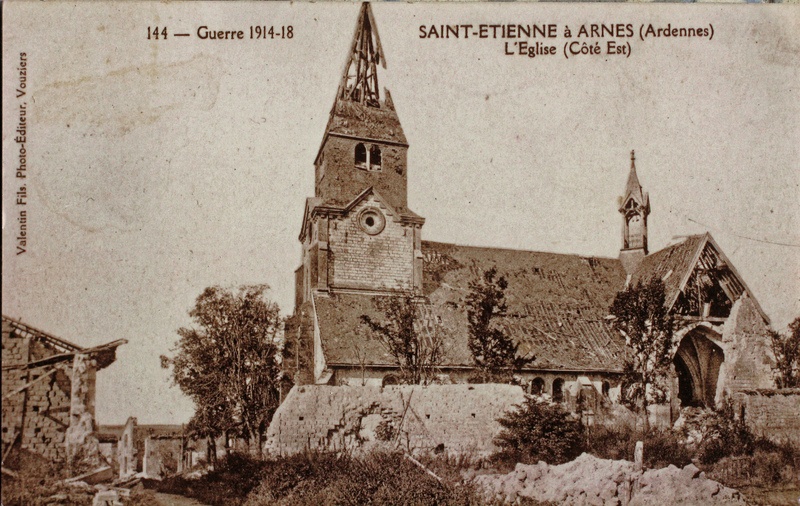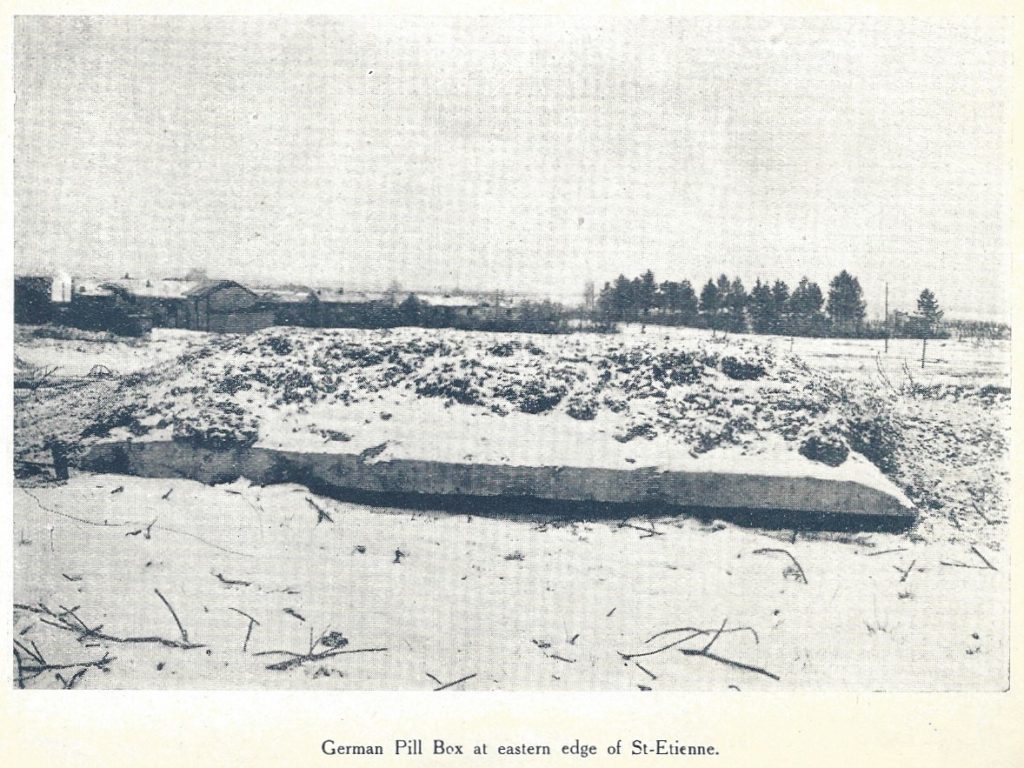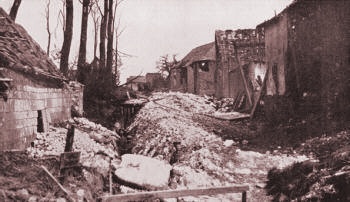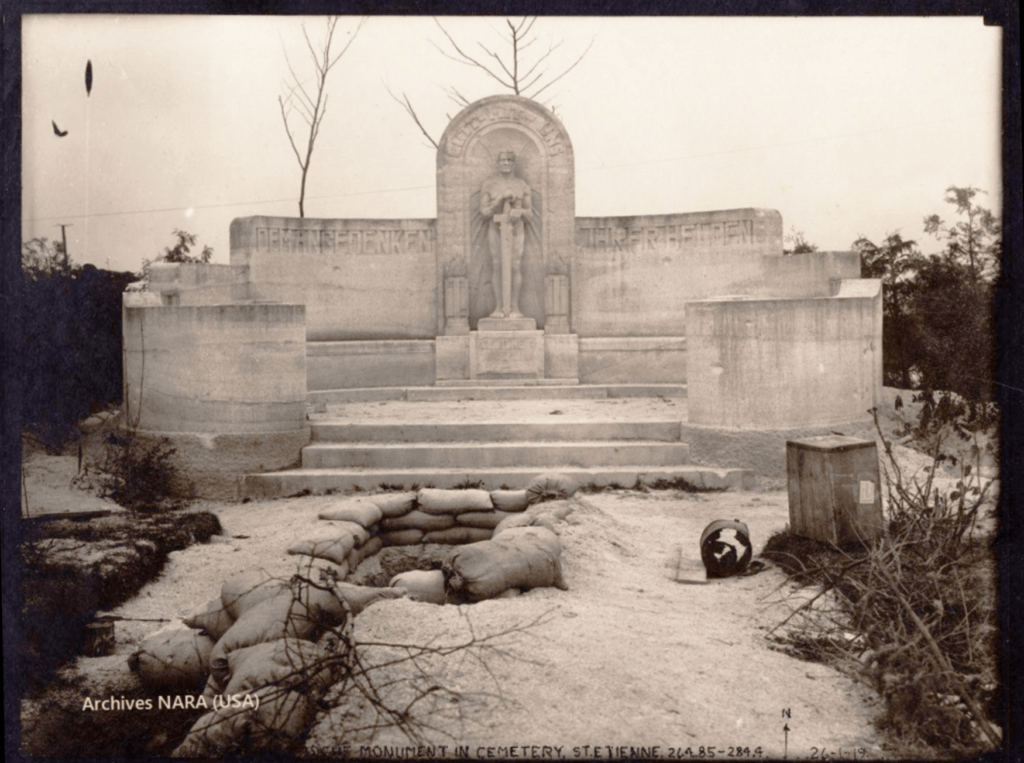By his wristwatch, Captain Steve Lillard of Decatur, Texas went over the top at 5:35 a.m. on October 8th. Lillard commanded L Company, 142nd Infantry. As part of 3rd Battalion, his command would support the men of 2nd Battalion who had attacked the German line just a few minutes before. As part of the second wave of this attack, Lillard and his men might have waited for the men in the first wave to advance farther. But things were already not going to plan.
In a modern war, it’s never a good idea to crowd close together.
As for what was going wrong, Lillard would have noticed that the tanks had gotten off to a late start. Just the day before, the men of the 71st Brigade were heartened to see a bataillion of French tanks were joining them. The 142nd Infantry was supported by 6 tanks in the assault. But the first wave of infantry had advanced without them, and the tanks were following behind. Since part of the ground in front of them was wooded, naturally the tanks moved toward open ground. The Americans had never trained with tanks, and some of them were mistakenly shot by French tankers.

The attack on St. Etienne
While Captain Lillard saw men ahead of him drift toward the wooded hilltop to his right, he noticed a lot of machine gun fire coming from the town ahead to his left. He could hold his men back longer, which was the plan, or help the first wave by protecting their left side. Anyway, Lillard had to move because German artillery had found his position and was hitting it hard.
The attack on the morning of October 8th was intended to capture two lines of defense behind the famous Hindenburg Line. The Hindenburg Line had been taken on September 26th, but the Germans had built defenses in four layers behind it. Concrete machine gun posts called Pill Boxes, rows and rows of barbed wire and trenches stretched across the French countryside.
The last two lines were in the vicinity of Saint-Étienne, a ruin about one kilometer away. As men were carefully making their way through barbed wire entanglements, German machine guns shot many of them. Captain Lillard found two sergeants, Chester Roberts of L Company and Kelly Nail of I Company and ordered them to take out the guns. Roberts and Nail managed to get around the guns and silence them. Consequently their men captured seventeen machine guns and 112 Germans there. Sgt. Nail later found his uniform was full of bullet holes and his helmet had been shot through twice; but he was unharmed.

In the town
By this point over two hours had passed. Troops from different units were intermixed and officers and NCOs were gathering leaderless men and taking them into the fight. More machine gun fire was coming from the town, including from the tower of the church. A shot from the one-pounder gun platoon put it out of business. Although the town was reported to be empty of Germans, it was found to be well defended. At the northwest edge of town was the Arnes, a stream beyond which the Germans were found to be in force. To the north and east, a German cemetery.
Meanwhile, lots of gunfire was coming from the cemetery. But artillery was crashing into the town, so American troops moved onto the cemetery. There they found the Germans in trenches. A platoon of Marines from the 2nd Division held the edge of town while the Southwesterners of the 36th Division tried to get closer to the Germans. They were able to approach the cemetery on the Germans’ right while others attacked head-on.
The Americans closed around the cemetery and fighting was hand to hand. But the enemy had little appetite for this kind of combat and the German survivors quickly surrendered. Having secured the cemetery, American soldiers and marines had captured the village of Saint-Étienne for good.

The attack slows
Soldiers and marines in Saint-Étienne found heavy German resistance on the other side of the stream. While the marines held on to the village, soldiers from the 142nd Infantry moved beyond the cemetery northeast along a road. This road connected Saint-Étienne with the next village, Semide, and taking it was the minimum objective of the attack.
Captain Lillard sent a patrol on the Semide road. Looking around him, he noted how few of the men he was leading had made it this far. Lillard was commanding what was left of several companies at this point, including his own L Company. His men advanced about two hundred yards on the Semide road, but found a German trench line. Having taken the third German line, the attackers had run into the fourth.
Likewise, while making their way along the road, men from Lillard’s command also found Captain Thomas Barton and his men advancing from Hill 160. It was late afternoon. As Captains Lillard and Barton were planning their next steps, a German counterattack formed on the right. As a result, the Americans withdrew to a line connecting Hill 160 and the town of Saint-Étienne.

Gallantry Rewarded
For their actions on October 8, 1918 at Saint-Étienne, Sgt. E. Kelly Nail and Sgt. Chester Roberts, both of Cleburne, Texas, were awarded the Distinguished Service Cross for extraordinary heroism in action having captured seventeen machine guns and 112 prisoners, four officers among them.
Learn more about the battle on the 8th of October:
Resources
Texas Military Forces Museum: The 71st Brigade at St. Etienne

2 thoughts on “Conspicuous Gallantry and Intrepidity”